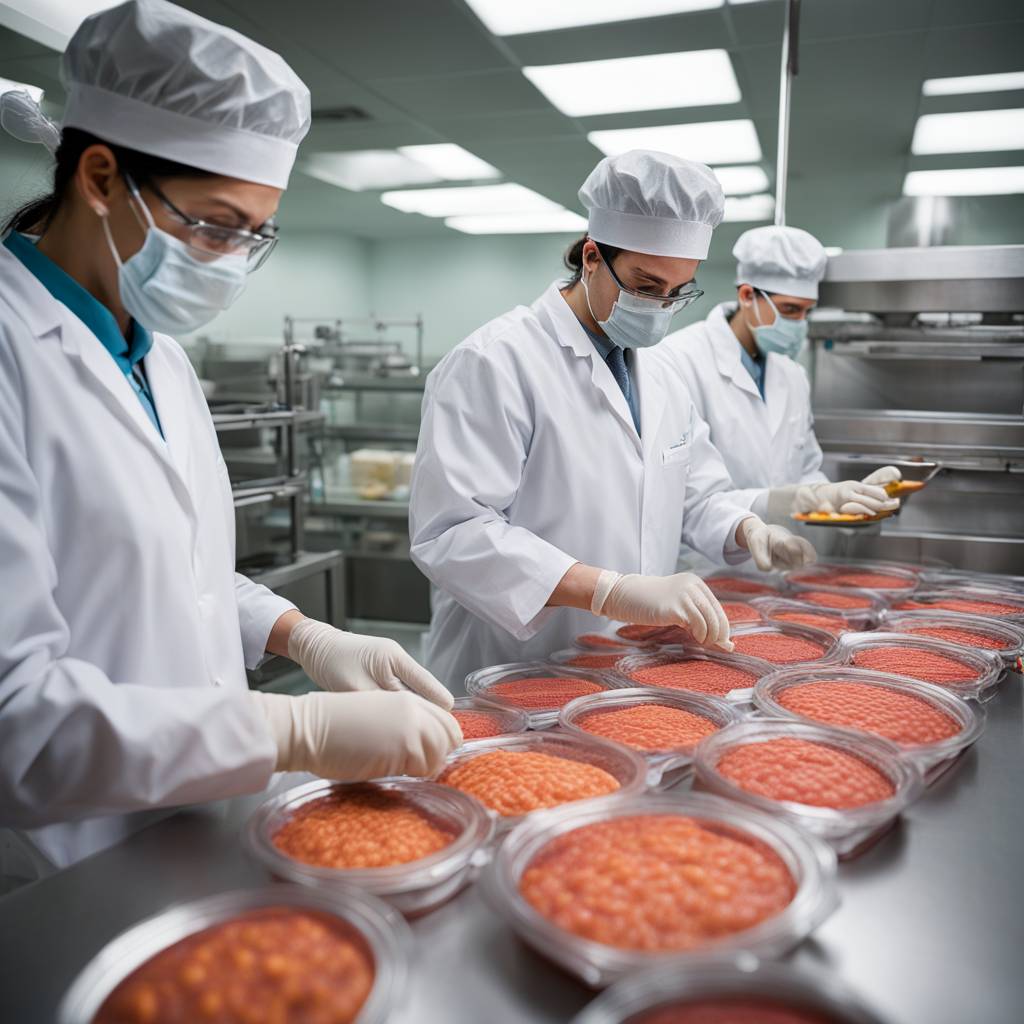Scientists from the Quadram Institute and UK Health Security Agency have discovered that bacterial populations remain stable on factory floors in ready-to-eat food production facilities despite cleaning efforts. This research comes in response to a listeria outbreak in 2019 that resulted in six deaths from contaminated ready-to-eat foods served in hospitals in the UK. Listeria monocytogenes, the bacterium responsible for listeriosis, poses a significant risk to pregnant women, the elderly, and immunocompromised individuals as it can lead to severe illness and even death.
Maintaining the safety of ready-to-eat foods is crucial in the food industry, as these products are consumed without any additional cooking steps that could kill contaminating bacteria. Despite efforts to disinfect facilities and control for microbial risks, pathogens like listeria can still breach food safety barriers and contaminate products. Little research has been done to understand the bacteria present in ready-to-eat food production environments. Researchers aimed to identify potential sources of cross-contamination and factors that contribute to the survival of L. monocytogenes, particularly the communities of other microbes that support and protect it.
Research conducted at a ready-to-eat food factory that had previously detected L. monocytogenes in non-food contact areas revealed stable populations of bacteria that coexist with the pathogen, despite cleaning efforts. Different areas of the factory maintained distinct bacterial populations, indicating adaptations to specific environmental conditions. The bacterial populations were found to be established within the factory, rather than being introduced from external sources. The study highlights the importance of understanding the microbial dynamics in various environments within ready-to-eat food facilities to inform more effective cleaning methods.
Although the overall bacterial populations and proportions remained stable before and after cleaning efforts, differences were observed between areas of the factory at varying temperatures. It was noted that cleaning reduced the numbers of bacteria and the overall bacterial load, making cross-contamination less likely. Moving forward, researchers hope to use this information to develop new strategies to alter the entire bacterial population in order to eliminate listeria effectively. This new understanding of listeria survival in ready-to-eat food production environments could lead to improved laboratory testing of cleaning methods and enhanced food safety protocols.
Maria Diaz from the Quadram Institute led the study and will present her findings at the Microbiology Society Annual Conference. Her talk, titled “Deciphering microbial dynamics in a Ready-to-Eat Food production facility: Insights into Listeria monocytogenes persistence,” will provide valuable insights into the lifestyle of this pathogen and potential approaches to combating its presence in food production facilities. By gaining a deeper understanding of how listeria survives and thrives in these environments, researchers aim to develop innovative strategies for controlling and eradicating this dangerous bacterium.













